The goal of science throughout history has been to describe the fundamental operation of the universe in the most simple and accurate way possible. It has become clear that simpler, more universal descriptions that can be applied to the most systems are those that last over time.
For example, a disconnected description of how things work would have once had a separate and distinct explanation for each individual system. Now, the foundation of all physical interactions can be said to find their roots in the four fundamental forces. These alone have become all that is presently necessary to build upon to explain the more complex interactions we see, providing an interconnectedness that was inaccessible in the earlier disconnected explanations. As a result, they are much more timeless explanations than previous ones which were less encompassing and required more elements to describe various aspects of reality.
Origins of Expansion of Space
As physics progressed, in the early 20th century, it reached a stage where the interpretations at that time could not be used to explain all observations. A relatively new observation in particular was inexplicable using the models of the time: that the light coming from all distant galaxies in every direction is shifted towards the red spectrum in what is known as a redshift.
The model used at the time of this discovery was then amended to add a new element to explain this observation, thereby adding complexity rather than reducing it, which became known as ”expansion of space”. This goes against all progress in science as it necessitates adding elements rather than simplifying.
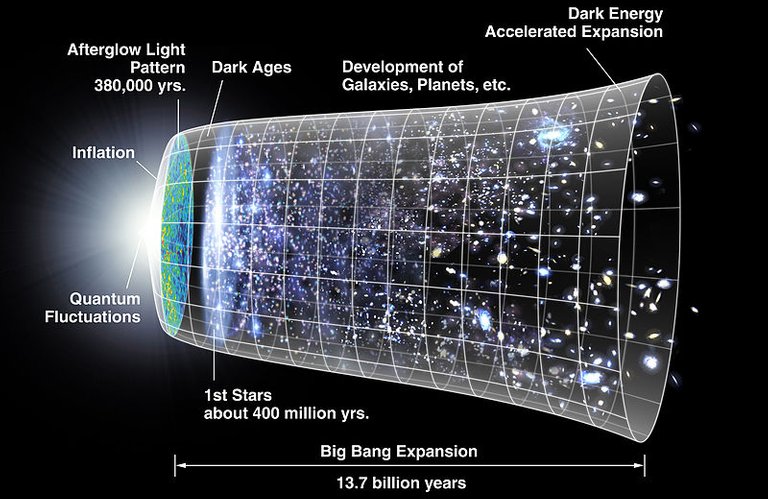
Source Present View of Universe
Initially, "expansion of space" was not part of the model. The observations of redshifted galaxies were explained by one of the mechanisms that causes redshift known as Doppler shift. This is where an object moving away from an observer has the wavelengths of light, or sound, stretched due to the motion away which leads to an increase in the wavelength of the light or sound.
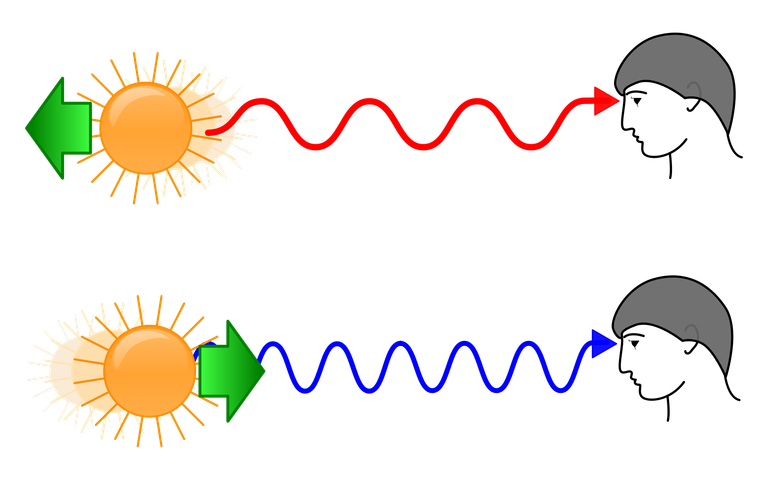
Source Doppler Shift
Early on, this alone was sufficient and the Big Bang model was born; since these objects were all moving away from Earth, they must have once been together and therefore a “Big Bang” led to the creation of the universe, it was said.
As this was more thoroughly studied, though, the redshift values of more distant galaxies were seen to be so large that—with Doppler shift as the explanation—they would be traveling faster than the speed of light. This was a non-trivial problem with the model that needed to be addressed.
At that time, Edwin Hubble was studying the correlation of redshift of galaxies to their distance away from Earth. What he found was that there was a seemingly linear relationship between how far away a galaxy was and how redshifted its light was. This correlation became known as Hubble’s Law and the linear redshift per distance became labeled “cosmological redshift.”
Source Hubble's Law
From this, the concept of “expansion of space” was born. To address the issue of the velocity of the galaxies, cosmological redshift was extracted from each galaxy’s observed redshift and said to be the result of a completely new function of the universe: expansion of space. With the extraction of this redshift from each galaxy’s total redshift, the remainder of the redshift was then assigned to Doppler effect and the calculated velocities were no longer faster than the speed of light and so this issue was said to be addressed.
However, very notably, this addition of a new function of the universe goes against the reductionism element upon which all of science is founded. This is not a trivial issue, but rather it is a critical flaw in the entire model and explanation.
Dark Energy
While Hubble's Law and expansion of space were added to explain the linear increase in redshift per distance, as technology progressed we recognized that the redshift per distance over sufficiently large distances becomes exponential. Yet again, to account for an inexplicable observation within the model, a new fundamental principle was added as the cause for this exponential increase: dark energy. Both find their origin in the assignment of cosmological redshift to the result of motion.

Source Dark Energy
What Isn't Being Said
It is not some absolute that the Big Bang happened, it is only an interpretation. Nor is it necessary for a model to use motion to explain the redshift observations of these distant galaxies. While motion can cause redshift, it does not mean that the redshift we see from distant galaxies is caused by motion. Gravity can also cause redshift. This has been completely overlooked as scientists have fixated on furthering a model that uses motion to explain the observations. In so doing, expansion of space as well as dark energy have both been necessary additions to the model to explain new developments. All the while, gravity remains a valid possibility for how the observations are produced.
There is nothing that says that the redshift observations must be caused by motion. The entire way that we view the universe as a society is built on an assumption that it is.
Distinctly, due to the need to introduce further elements to the model in order to explain various observations, there is a mistake in choosing motion as the cause to begin with. Just because there is no satisfactory explanation for how gravity could produce the observations of redshift in distant galaxies does not preclude it from doing so.
With an explanation for how gravity could cause these observations, there is no need for adding new fundamental principles to how the universe functions because gravitational redshift is already a known mechanism that results from gravity. Therefore, such an explanation would make it clear that neither expansion of space nor dark energy are real. Even before then, the mere fact that it is necessary to add new elements to the model strongly suggests gravity is the real cause, even without an explanation for specifically how.
How Gravity Produces Redshift Per Distance
When light moves away from a source of gravity, it is redshifted. When it moves towards a source of gravity, it is blueshifted.
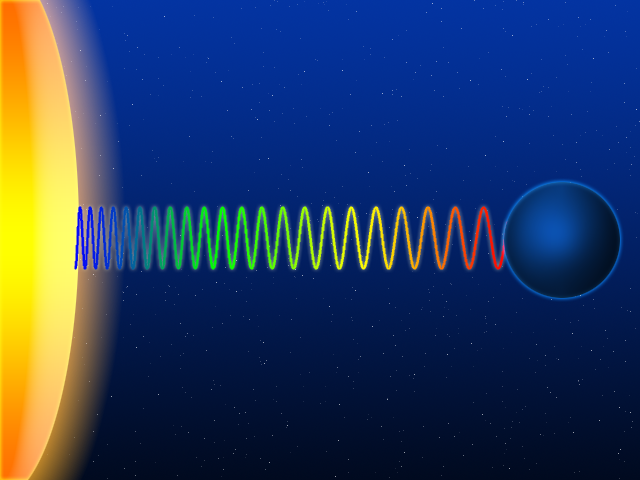
Source Gravitational Redshift
Initially, gravity was given cursory consideration but due to the redshift of all distant galaxies being in all directions and there being no distant blueshifted galaxies observed, motion was assumed to be the cause. On the surface, it seems like it would be since it would mean everything is moving away from everything else. It has a strong enough explanation that it brought us to conclude that gravity was not the cause. At first glance, it "makes sense." However, with further consideration, it requires added complexity.
On the other hand, gravitational redshift can, and therefore--due to the lack of needing to add any elements to the model--does cause cosmological redshift.
How it does this is literally not straight-forward and thus, without careful consideration, the mechanism behind it was not recognized.
Using pattern recognition, we see that the Moon orbits the Earth, which orbits the Sun, which orbits the Supermassive Black Hole at the center of our Milky Way galaxy. This pattern implies that logically the Milky Way galaxy should orbit another larger mass, which should orbit another larger, and another, ad infinitum.
As this larger mass that the Milky Way galaxy orbits would be in one position relative to Earth, on the surface it would appear that even if this were the case it is only capable of producing redshift in the light of those galaxies in its direction. The light, traveling to Earth, would move away from this object and thereby be redshifted. However, the galaxies on the opposite side of Earth to this object would have their light travel towards it to arrive at Earth and be blueshifted, creating a dichotomy of half blueshifted galaxies and half redshifted galaxies.
Notably, within a relatively short distance, we do see this dichotomy with respect to the Great Attractor. In fact, these local blueshifted galaxies are why we say all distant galaxies are redshifted rather than "all galaxies."
Cosmography of the Local Universe, Courtois et al. @11:00
However, beyond a certain distance, all galaxies are redshifted. And so, on the surface, it appears that gravitational redshift cannot be the cause. The missing link, however, is gravitational lensing. When light is influenced by gravity, its direction of travel can be bent so that it curves around the object.
Presently, we have only been aware of this effect being caused by observations such as when the light passes near a galaxy and produces an Einstein Cross or an Einstein Ring:
However, this happens on a much larger scale than meets the eye. As can be seen from the local dichotomy described by Courtois et al., light that travels short distances to reach Earth is redshifted from the galaxies in the direction of the Great Attractor and blueshifted from the galaxies in the direction opposite of the Great Attractor.
Due to the short distance of travel, the light from these galaxies is not greatly influenced by the gravitational lensing of the Great Attractor and so they show the dichotomy expected from a "straight-forward" interpretation of gravitational redshift. As distance increases, however, the light is influenced over larger and larger lengths of time by the Great Attractor's gravity, and so it is able to be drastically gravitationally lensed.
The more distant the galaxy, in fact, the more it has been gravitationally lensed because the Great Attractor is so massive that it gravitationally lenses all light in our observable universe so that it bends back directly towards it. And like neutrinos passing through the Earth, this light then physically passes through the Great Attractor. As it does so, the force of gravity then is in the opposite direction and this causes it to then gravitationally lens back towards the Great Attractor into a Figure-8 flow pattern.
Light from distant galaxies, then, does not travel in a straight line to Earth but rather in a Figure-8 pattern, repetitively passing through the Great Attractor in this Figure-8 pattern, and after one pass or many, it then arrives at Earth, and can do so from any angle.
From this Figure-8 orbital flow pattern, gravitational redshift per distance is produced. Notably and non-trivially, this is how gravity causes electromagnetism, by the flow of particles in Figure-8 orbital patterns, the summation of which produces the observation of an electromagnetic field, which so drastically reduces the fundamental principles of physics that it shows that this is necessarily what is happening. Unlike the interpretation of motion as the cause of cosmological redshift, which adds complexity, gravity as the cause drastically reduces complexity by also explaining how electromagnetic fields are produced by gravity.
Due to the Figure-8 orbital, gravitational redshift is produced because with each pass through a loop of the Figure-8 pattern, the light specifically moves radially a certain distance out and the same distance back, the radial motions canceling with one another as redshift and blueshift are equal, and it moves from one side of the loop to the other. It is due to this orbital motion that redshift is produced, and so with each pass through a loop of the Figure-8 pattern, additive gravitational redshift per distance is produced. This leads to the observation known as Hubble's Law and called "cosmological redshift."
As the redshift increases, it causes the physical size of the Figure-8 orbital to get smaller as the particles of light become less massive. In the same way as there are larger bodies, ad infinitum, so too are there smaller bodies, ad infinitum. What we call "light" is waves composed of "infinitesimal" particles, the differences in wavelengths being demonstrative of the mass of the individual particles. Redshifted light, due to the loss in energy, leads to "shrinking" of the particles so they become physically smaller in mass. As a result, they are more easily pulled out of their trajectory by the force of gravity. Due to the inverse radius-squared function of gravity, the smaller the size of the Figure-8 pattern, the larger the force of gravity exponentially.
This, in turn, leads to the observed accelerating rate of redshift per distance.
Thus, gravitational redshift can also be said to cause the accelerating rate of "cosmological redshift." As this explanation does not need to add complexity with "expansion of space" and "dark energy", but instead it drastically simplifies by simultaneously explaining how electromagnetic fields are produced by gravity--and therefore demonstrating why electromagnetism is caused by gravity--it shows to us that it is the case.
Therefore, "expansion of space" and "dark energy" are erroneous.
For more information, visit my website CascadingUniverse.org or check out my other articles here on Steemit.
Thanks for reading!
-Steve Scully
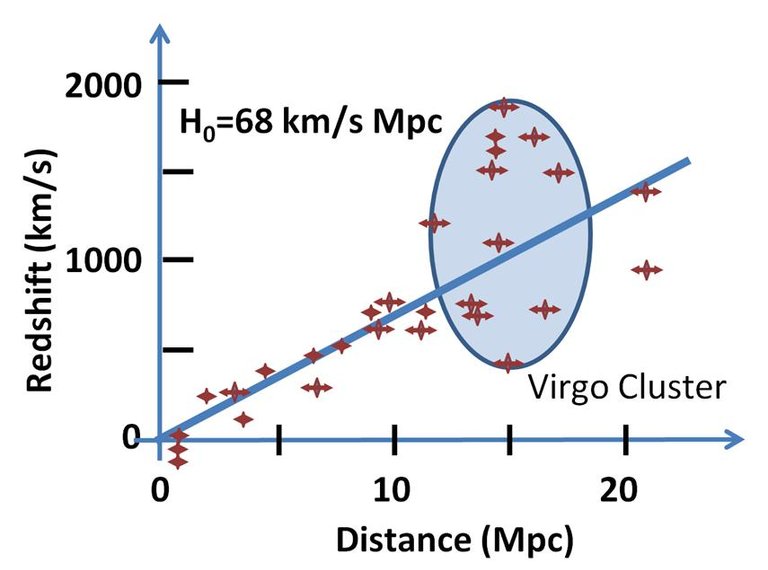
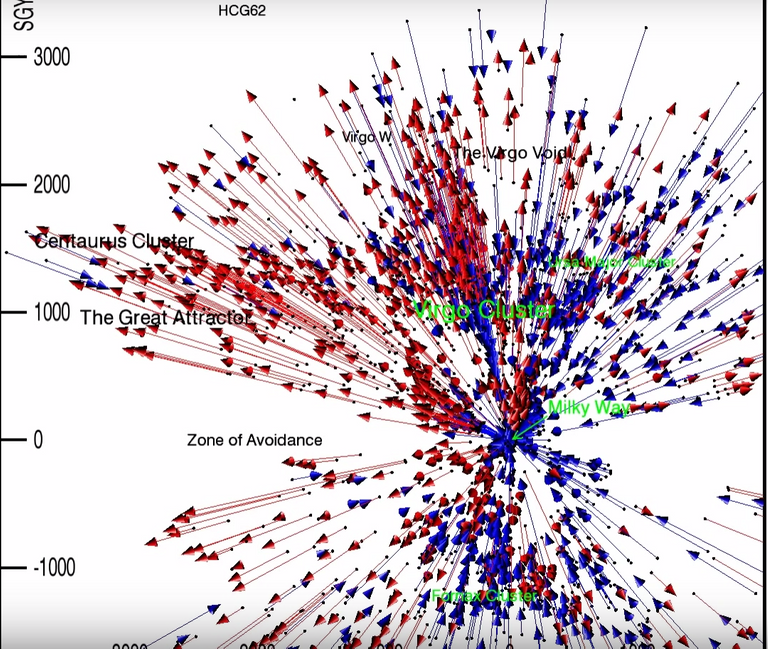
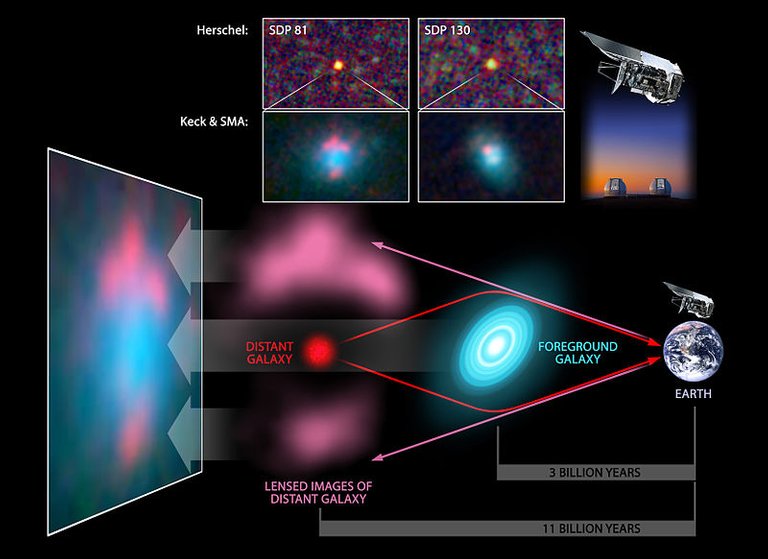

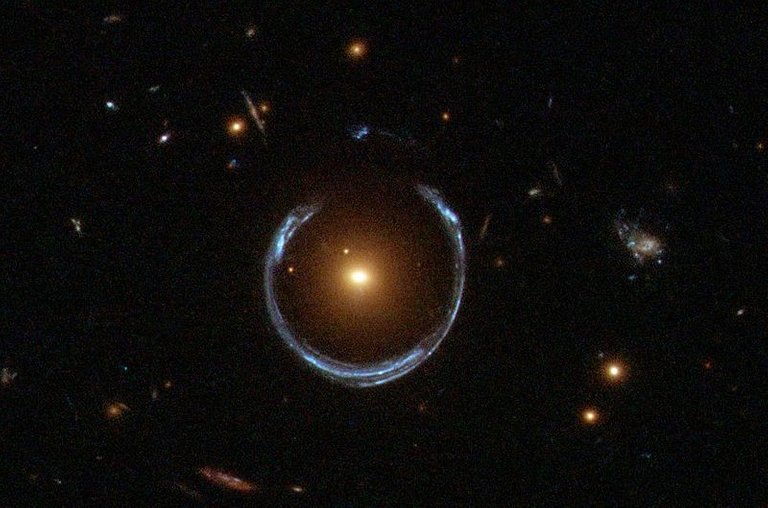
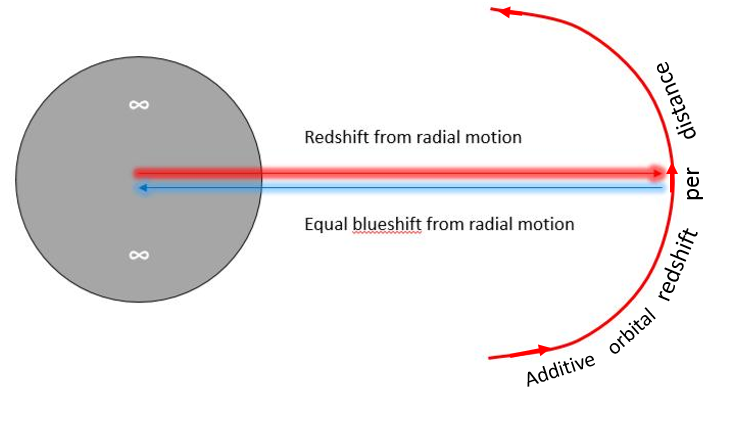
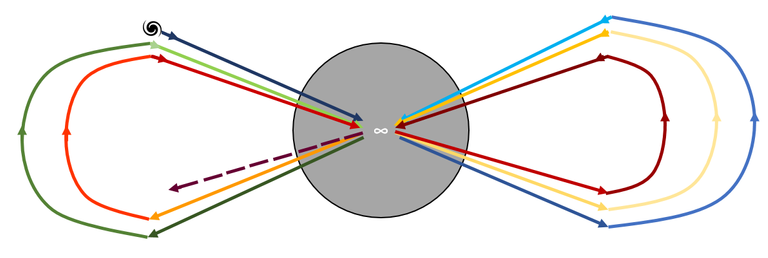
Your theory is a much more sensible interpretation. Also, another wrong conclusion caused by the false "expanding universe" interpretation is that "The expansion of the universe causes distant galaxies to recede from us faster than the speed of light" [wikipedia]. Indeed, if redshift was caused by the galaxies' motion (doppler effect), not only we conclude in an earth-centric accelerating universe, but also the very distant galaxies seem to go faster than the speed of light! Don't you think that this is another good reason to reject the "expanding universe" theory?
Hi thanks again! There are definitely countless reasons to reject the expanding universe theory. Their solution to this faster than the speed of light problem was to say they aren't moving faster than the speed of light but that space is physically expanding, removing a large enough chunk of the redshift (Hubble's law) and assigning it to the result of this expansion, so as to maintain the theory. Then, the galaxies are interpreted to be only moving at a certain velocity below the speed of light and, voila, all is well as space is clearly expanding. Besides the whole distribution of an utterly false, completely untrue fundamental description of reality being presented as essentially true when the only thing true about it are the observations upon which it is built. Those aren't really focused on though, and mostly we just learn the interpretations which are, simply put, wrong every step of the way.
Truth always looks fake and vice versa